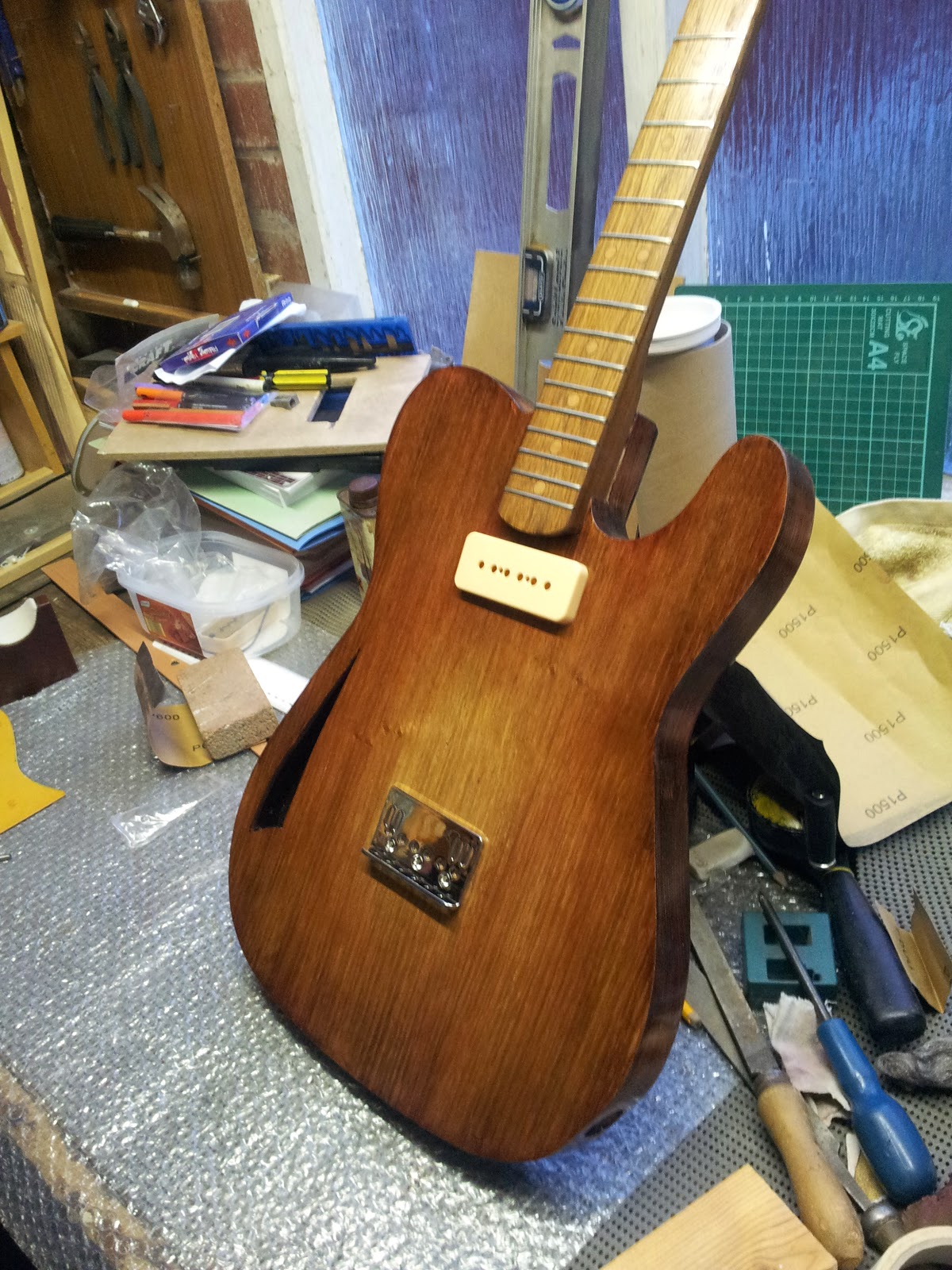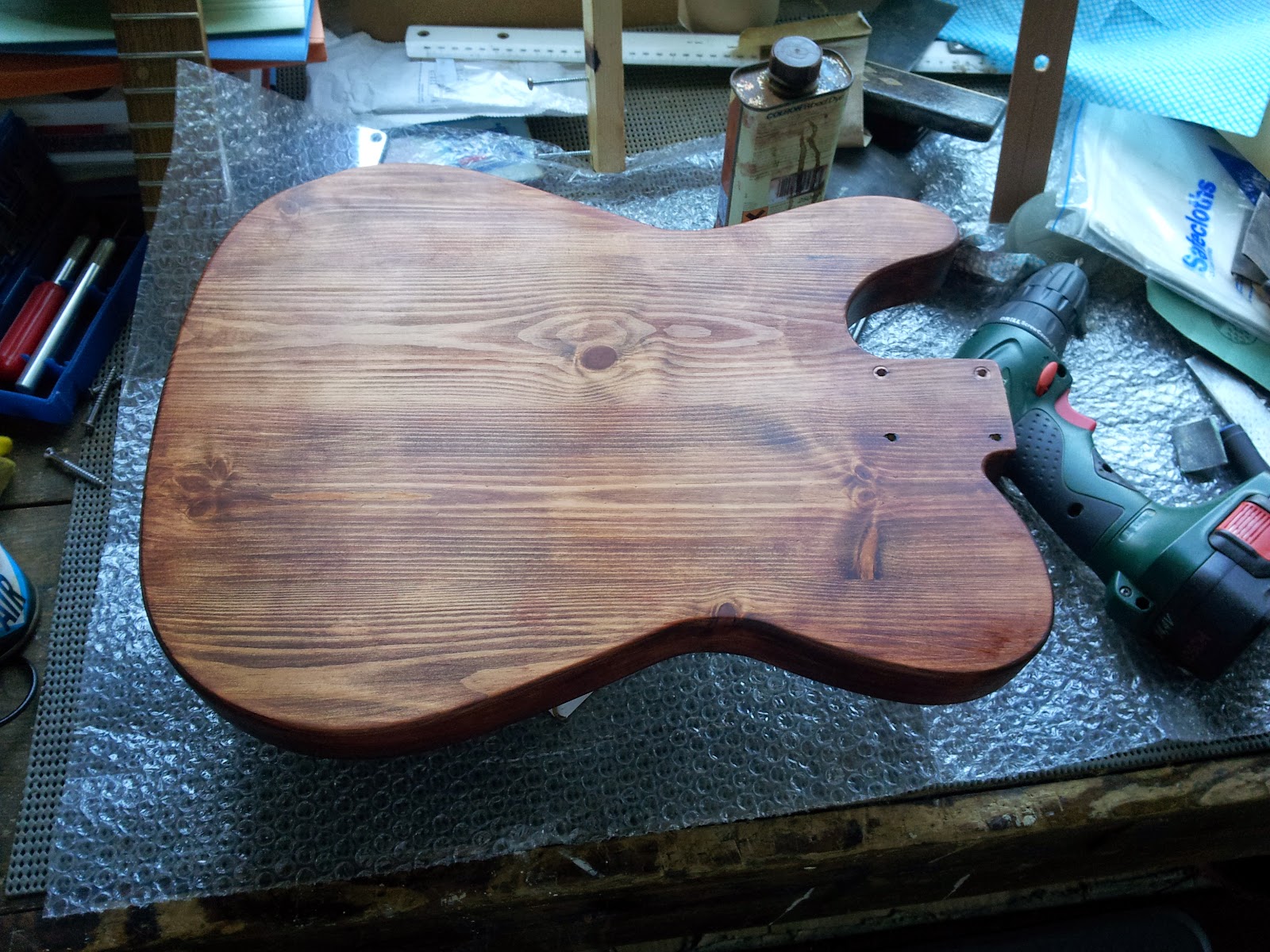I wanted to mount the bridge today so I roughly laid out the position on the centreline with the saddle line. In the perfect world that would be exactly 25 1/2 inches (647.7) from the string side of the nut, however in the real world I measured the difference between the nut and the centre of the 12th fret then transferred the same distance down to the centre line on the body (654mm in total).
I then had to extend the neck outline down to the area of the bridge and this is when it became obvious that the neck was not as central as I had first though. So after some considerable adjusting and repositioning of the neck I measured everything again this time transferring everything via pencil lines on masking tape.
This time everything lined up nicely and the bridge lined up centrally with the body and the neck. I had read that the saddle line should be about 4.75mm (3/16th of an inch) further than the actual scale length to help with intonation so I laid out a second line and positioned the bridge according to that marking out the holes for the mounting screws and the 6 through sting holes.
After drilling the 3 mounting holes I screwed the bridge in place and then used it a a template and guide for the through string holes.
I still haven't decided if I should use a pickguard or not. The accuracy of the pickup cavity routing has to be perfect and I think the standard controls would look wrong as well, the switch and knobs would need to be mounted directly in the top so I would have to route an access panel on the back as well.
The guitar would look awesome without the pickguard but I think I will continue with one in mind rather than without.
When I removed the masking tape some of the layers of Tru-Oil and stain came off as well, the masking tape was more sticky than I realised. However as Bob Ross used to say "We don't make mistakes, just happy little accidents..."
The tape took the finish right back to the light oak so I sanded an area around the blemish to really bring out the sunburst effect I had been after from the start.






















































